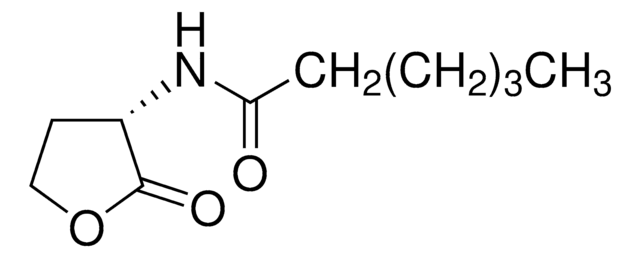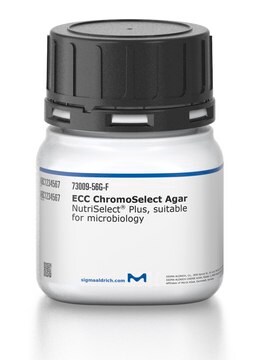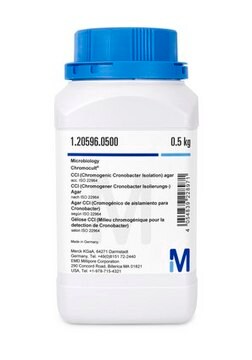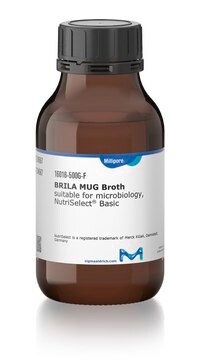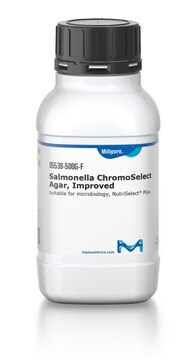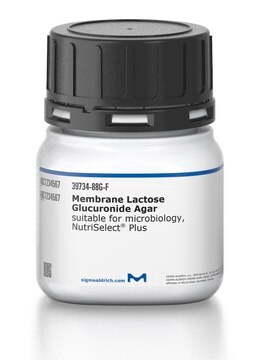81938
Coliform-ChromoSelect-Agar
suitable for microbiology, NutriSelect® Plus
Synonym(e):
Coliform Agar ChromoSelect
About This Item
Empfohlene Produkte
Sterilität
non-sterile
Qualitätsniveau
Form
powder
Haltbarkeit
limited shelf life, expiry date on the label
Zusammensetzung
agar, 12 g/L
chromogenic mixture, 0.2 g/L
dipotassium hydrogen phosphate, 3 g/L
peptone, special, 3 g/L
potassium dihydrogen phosphate, 1.7 g/L
sodium chloride, 5 g/L
sodium lauryl sulfate, 0.1 g/L
sodium pyruvate, 1 g/L
tryptophan, 1 g/L
Hersteller/Markenname
NutriSelect® Plus
pH-Endwert
6.8±0.2 (25 °C)
Anwendung(en)
agriculture
bioburden testing
environmental
food and beverages
water monitoring
microbiology
Eignung
selective and differential for Citrobacter spp.
selective and differential for Enterobacter spp.
selective and differential for Escherichia coli
selective and differential for Klebsiella spp.
selective and differential for Salmonella spp.
selective and differential for Shigella spp.
selective and differential for coliforms
selective and differential for enterobacteriaceae
Allgemeine Beschreibung
Anwendung
Angaben zur Herstellung
Fußnote
The designations basic, plus, or prime are added to indicate the quality control level, from basic quality control to standard QC plus to prime for full regulatory compliance.
Rechtliche Hinweise
Signalwort
Warning
H-Sätze
Gefahreneinstufungen
Skin Sens. 1
Lagerklassenschlüssel
11 - Combustible Solids
WGK
WGK 3
Flammpunkt (°F)
Not applicable
Flammpunkt (°C)
Not applicable
Persönliche Schutzausrüstung
Eyeshields, Gloves, type N95 (US)
Hier finden Sie alle aktuellen Versionen:
Besitzen Sie dieses Produkt bereits?
In der Dokumentenbibliothek finden Sie die Dokumentation zu den Produkten, die Sie kürzlich erworben haben.
Kunden haben sich ebenfalls angesehen
Artikel
Selective media enable faster results and visual confirmation for the detection, identification, and enumeration of microorganisms
Unser Team von Wissenschaftlern verfügt über Erfahrung in allen Forschungsbereichen einschließlich Life Science, Materialwissenschaften, chemischer Synthese, Chromatographie, Analytik und vielen mehr..
Setzen Sie sich mit dem technischen Dienst in Verbindung.

